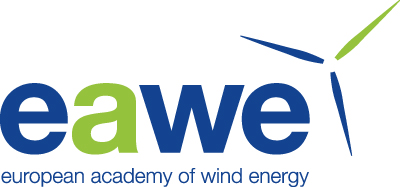the Creative Commons Attribution 4.0 License.
the Creative Commons Attribution 4.0 License.
Building a Diverse and Equitable Distributed Wind Workforce: A Strategic Approach to Collaborator Selection
Abstract. The demand for a skilled distributed wind (DW) workforce is rising with industry growth and recent federal support for technology adoption. However, challenges persist in scaling the industry. For example, DW installers have reported difficulty hiring, and areas with economically viable DW potential are often in rural and remote disadvantaged communities where workforce development opportunities have not been fully realized. Overall, the wind energy sector has a below-average representation of marginalized groups, and the transition to a cleaner energy future is an opportunity to change that. As more renewables, including DW, come online, scaling workforce capacity can be done in tandem with supporting workforce diversity. Moreover, to promote fair and equitable outcomes in workforce development, efforts to address limited workforce capacity should encourage participation from under-resourced and under-represented populations. Engaging under-represented populations not only helps close skills gaps but also ensures that the wind energy sector benefits from diverse perspectives, driving innovation and more effective solutions. Additionally, prioritizing workforce diversity ensures marginalized communities share in the benefits of the clean energy transition, ultimately supporting the long-term sustainability and inclusivity of the industry. The Diverse and Equitable Workforce in Wind Energy (DEWWind) project has developed a replicable equity-driven rubric to identify potential industry and academic collaborators for workforce development programming. This rubric identifies and considers workforce partners outside of traditional networks across locational, institutional, and socioeconomic criteria to advance new partnership-building opportunities in areas favorable for DW. These collaborative opportunities can serve as case studies for improving future scale-up of equitable wind workforce partnerships.
- Preprint
(1506 KB) - Metadata XML
- BibTeX
- EndNote
Status: closed
-
RC1: 'Comment on wes-2024-145', Anonymous Referee #1, 24 Feb 2025
-
AC1: 'Reply on RC1', Kendall Parker, 27 Mar 2025
Thank you for taking the time to review and provide feedback. We appreciate your comment.
Citation: https://doi.org/10.5194/wes-2024-145-AC1
-
AC1: 'Reply on RC1', Kendall Parker, 27 Mar 2025
-
RC2: 'Comment on wes-2024-145', Anonymous Referee #2, 25 Feb 2025
The Building a Diverse and Equitable Distributed Wind Workforce: A Strategic Approach to Collaborator Selection provided a novel and reasonable approach to identifying training programs that can increase diversity and equity in wind energy workforce through distributed wind technology. As an experienced wind workforce analyst, the methods are sound and provide valuable approach for making data driven and informed workforce development decisions. To strengthen the article, the authors may consider a more detailed discussion on the types of underserved and underrepresented communities. For example, like utility-scale deployment, distributed wind is likely is occurring in more rural areas. What are the unique economic and demographic implications of these types of communities on increasing diversity and equity in wind energy. Several minor comments for authors consideration are also attached as a supplement.
- AC2: 'Reply on RC2', Kendall Parker, 04 Apr 2025
Status: closed
-
RC1: 'Comment on wes-2024-145', Anonymous Referee #1, 24 Feb 2025
The contents of the paper are accurate and reasonable.
Citation: https://doi.org/10.5194/wes-2024-145-RC1 -
AC1: 'Reply on RC1', Kendall Parker, 27 Mar 2025
Thank you for taking the time to review and provide feedback. We appreciate your comment.
Citation: https://doi.org/10.5194/wes-2024-145-AC1
-
AC1: 'Reply on RC1', Kendall Parker, 27 Mar 2025
-
RC2: 'Comment on wes-2024-145', Anonymous Referee #2, 25 Feb 2025
The Building a Diverse and Equitable Distributed Wind Workforce: A Strategic Approach to Collaborator Selection provided a novel and reasonable approach to identifying training programs that can increase diversity and equity in wind energy workforce through distributed wind technology. As an experienced wind workforce analyst, the methods are sound and provide valuable approach for making data driven and informed workforce development decisions. To strengthen the article, the authors may consider a more detailed discussion on the types of underserved and underrepresented communities. For example, like utility-scale deployment, distributed wind is likely is occurring in more rural areas. What are the unique economic and demographic implications of these types of communities on increasing diversity and equity in wind energy. Several minor comments for authors consideration are also attached as a supplement.
- AC2: 'Reply on RC2', Kendall Parker, 04 Apr 2025
Viewed
| HTML | XML | Total | BibTeX | EndNote | |
|---|---|---|---|---|---|
| 589 | 57 | 33 | 679 | 40 | 52 |
- HTML: 589
- PDF: 57
- XML: 33
- Total: 679
- BibTeX: 40
- EndNote: 52
Viewed (geographical distribution)
| Country | # | Views | % |
|---|
| Total: | 0 |
| HTML: | 0 |
| PDF: | 0 |
| XML: | 0 |
- 1





The contents of the paper are accurate and reasonable.